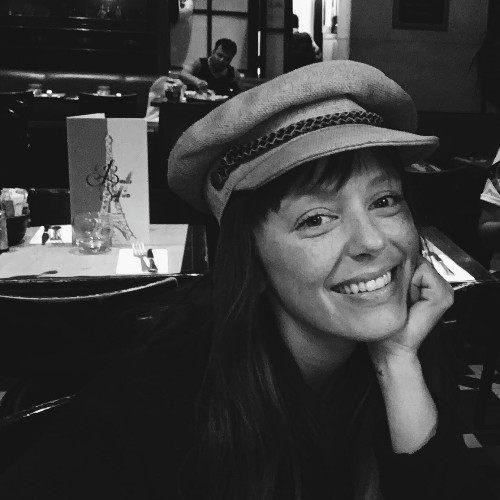Breastfeeding After Breast Cancer

There’s good news for parents hoping to nurse following cancer treatment.
Breast cancer affects more than 11,000 women under age 40 annually in the United States, making it the most common malignancy among women of childbearing years. For new and soon-to-be birthing parents who have survived cancer, welcoming a baby can be an intimidating time of questioning and feeling concerned over breastfeeding and the well-being of their and their baby’s health.
If you are expecting a baby after breast cancer treatment, be encouraged that successful breastfeeding is “absolutely possible,” according to Nicole Peluso, IBCLC, CD, CAHPE, a lactation consultant, parent educator, and birth and postpartum doula practicing in Los Angeles, and a nursing parent and breast cancer survivor.
However, there are important considerations to make and potential challenges associated with breastfeeding after breast cancer that parents should be aware of to best prepare for the postpartum period and beyond.
The Challenges of Nursing After Breast Cancer
There are many barriers when hoping to breastfeed after cancer, says Jenelle Ferry, MD, neonatologist and director of feeding, nutrition, and infant development at Pediatrix Neonatology of Florida.
“Challenges to initiating breastfeeding [after cancer] can include medical counseling against breastfeeding, lack of maternal counseling or medical support, the assumption that breastfeeding is unfeasible, and [parental] uncertainty. Challenges to continued breastfeeding include lack of lactation support, insufficient milk supply, and the possibility of more nipple pain and discomfort on the untreated breast,” she says.
Specific obstacles nursing parents may face depend on how their cancer was treated.
“After radiation, lactation is possible in about 50% of [birthing parents] (for the affected breast), albeit with a significant reduction in quantity,” explains Dr. Ferry, noting, “Radiation may also increase the risk of mastitis.”
Patients who underwent surgery as part of their treatment may experience a range of breastfeeding success depending on whether or not the cancer metastasized and its location.
“A common spot for breast cancer is behind the nipple. If ducts are cut right behind the nipple, a lot of damage is done to the flow of milk,” explains Peluso. “If cancer is outside of the nipple area, severed nerves responsible for the ejection of milk from the breast can compromise the breasts’ ability to remove the milk.”
The good news? There are two breasts, meaning if the cancer was confined to one breast, you can still feed from the other side.
“As long as the breast tissue is healthy and intact, it has the capacity to still provide breast milk in the supply needed,” says Ashley Georgalopoulos, IBCLC, a lactation consultant practicing out of Knoxville, Tennessee. “Even in the case of one breast being present, it just may feel very lopsided once lactating.”
While it may be uncomfortable, feeding from only one side is still manageable. Peluso compares this to how a parent nurses a set of twins. “If you think about twins being able to breastfeed successfully —a [breast cancer survivor] who can only nurse from one breast is doing the same amount of work on that single breast as a nursing parent of twins. Double milk production and double labor on the healthy breast are doable and pose no risks to the nursing parent or baby.” Taking it a step further, Dr. Ferry says there have even been reports of parents feeding twin babies from only one breast—amazing!
The same rule can apply to birthing parents who have undergone a mastectomy, as long as there is enough breast tissue to sustain breast milk capacity. In fact, Georgalopoulos says even exclusive breastfeeding is possible in some cases because, whether from one or two breasts, the body is designed to meet an infant’s demand for more breast milk through adequate stimulation and milk removal. Unfortunately, breastfeeding is usually unsuccessful following a double mastectomy, as the goal is to remove as much breast tissue as possible, leaving little milk-making tissue after breast surgery.
Another issue breast cancer survivors face is forging a renewed mind-body connection that views the breasts as a “life-giving part of [the body] versus something that is trying to kill you,” says Peluso. To assist with this connection, she recommends all breastfeeding parents learn the important skill of manual expression, which is a method that involves gently removing milk from the breasts by hand. This practice of routine touching can help a parent relearn and re-appreciate their bodies over time.
She further explains, “It’s difficult as a survivor to feel the normal lumpiness of a healthy lactating breast and not think about tumors. Changing your perspective on this takes time, but it is worth it. Finding a compassionate and knowledgeable IBCLC (International Board Certified Lactation Consultant) can be an important piece to reframing your own narrative.”
Emotional support is essential, says Georgalopoulos, “as parents may have varying triggers, trauma, and lifestyles that require many follow-up appointments, and [these factors] may complicate the intention to breastfeed.”
A great place to seek resources for support is through your team of health care providers, including your oncologist, obstetrician, or lactation consultant. Ask for recommendations based on your current circumstances and personal goals for your breastfeeding journey.
Potential Risks to Nursing Parents or Baby
A common question for nursing parents with a history of cancer, especially if treatment is recent, is how long they need to wait before breastfeeding is considered safe.
“Cancer cannot pass through the breast milk in a way that would cause a baby to have breast cancer,” ensures Georgalopoulos, adding, “Chemotherapies and certain medications do need to be out of the system prior to providing breast milk.”
However, it’s important to note that health care experts recommend people who received breast cancer treatment wait before trying to get pregnant.
“The recommendations for waiting [to conceive] post-treatment mostly revolve around the risks of early conception more than breastfeeding specifically,” explains Dr. Ferry. “Experts generally recommend that breast cancer survivors wait between one and three years after treatment to try to conceive. Once the person’s physician has deemed conception will be safe and feasible, breastfeeding should be recommended at the time of delivery.”
Outside of these time constraints for providing safe breast milk, there are no known risks of breastfeeding after breast cancer. In fact, the opposite is true, claims Georgalopoulos.
“Hormones involved with lactation also keep estrogen levels in check, so in the case of cancerous cells that are directly related to estrogen blood levels, breastfeeding actively lowers the risk of these types of cancers.” What’s more, she says there’s evidence that shows “birthing parents who have accrued seven years or more of breastfeeding/lactation in their life have [even lower risk] of developing breast cancer pre- or post-menopause.”
Breastfeeding has many health benefits and is known to lower the risks of developing certain diseases, and the same can be said for parents with a previous history of breast cancer, though there are a few caveats to note.
“After already having cancer, risk reduction for recurrence is also possible. However, many people of childbearing age get breast cancer because of a gene mutation, [such as] BRCA1 and BRCA2, though there are likely many more mutations that affect risk factors for breast cancer,” explains Peluso. “If you are at very high risk of breast cancer because of a mutation, that risk remains high even if you breastfeed, although likely lower than not breastfeeding.”
Unfortunately, she says breast cancer research on recurring risks for breastfeeding parents is lacking and advises current patients to find a breast specialist who is well-versed in mammograms and MRIs for lactating parents in order to best interpret the results while “understanding how lactation can affect changes in the breast and images.”
There’s no denying that breastfeeding after breast cancer comes with challenges, but the important takeaway is that it is possible and should be encouraged, says Dr. Ferry.
“This may require multi-level support and expert advice. Nursing parents should receive counseling on the benefits of breastfeeding and the types of resources available to them. Additionally, early support is important and should include early skin-to-skin, frequent feedings, and use of a hospital-grade double electric pump as strategies to initiate lactation.”








